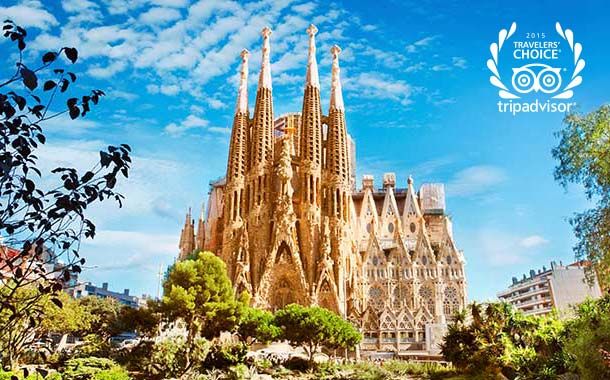Casa Milà
Casa Vicens
Built between 1883 and 1888, the Casa Vicens is among Gaudí’s very first big assignments. The residential summer villa was designed for industrialist Manuel Vicens and his family, who owned a ceramic factory. The house is constructed of undressed stone, rough red bricks, and finally coloured ceramic tiles in checkboard and floral patterns, paying tribute to the owners. You can visibly see stunning Islamic influences in the design as well. While you can’t enter the house, seeing it from the outside is wonderful.
Sagrada Familia
The Sagrada Familia is probably his most famous work, although still currently under construction with an expected finish date around 2030. The building was his lifelong dream and it will be completed 100 years after its conception, with his undying vision celebrated. The design and beautiful sculptures of the church shadow the relationship between man, nature, and religion. To get a unique panoramic view of the charming city, climb one of the church’s towers.Park Güell
Casa Calvet
Considered the most conservative of his work, the Casa Calvet was built for the textile manufacturer Pere Màrtir Calvet in 1899. The stunning building projects the baroque Catalan style with the stone quarried on Montjuïc hill featuring intricate ironwork in the balconies. The façade of the building is designed taking a beautiful curve and the attic balconies look like those of a fairy tale castle. In 1900, Barcelona City Council awarded the Casa Calvet with the prize for best building of the year.
Torre Bellesguard
Gaudí’s inspiration for the Torre Bellesgaurd was the medieval castle of Martin I, the last king of the Catalan dynasty of the House of Barcelona. The castle was designed using rectilinear forms that are rarely seen in his other work. He restored the ruins of the medieval palace and used a beautiful blend of Art Nouveau and Gothic style. The castle truly stands as one of his most personal, symbolic, and spectacular work.
Casa Batlló
Gaudí is known for being bold and intricate. He paid attention to every single detail and this is glamorously witnessed in the Casa Batllo, one of the most iconic Gaudí buildings. It was designed for Joseph Batlló, a wealthy aristocrat, as a residential complex. Gaudí used a mix of colours and shapes found in marine life as inspiration behind his genius creativity.
By Amal Ahmed
